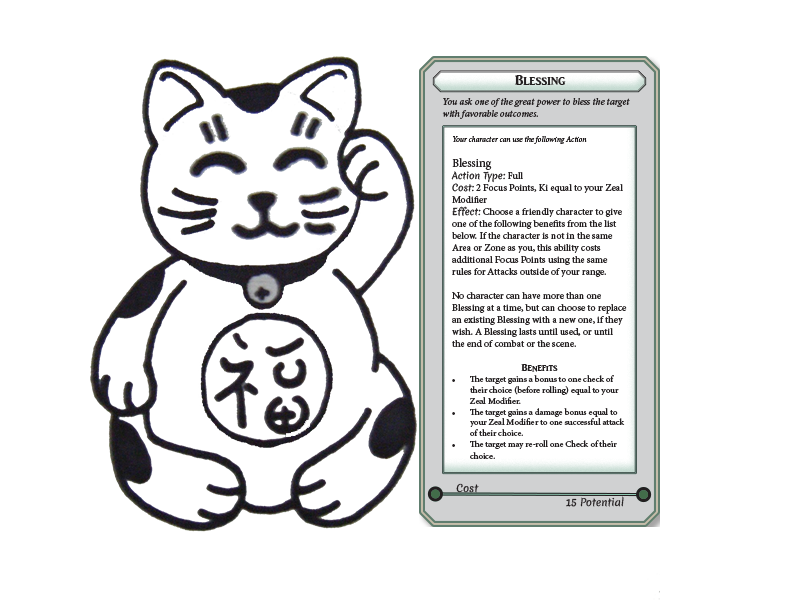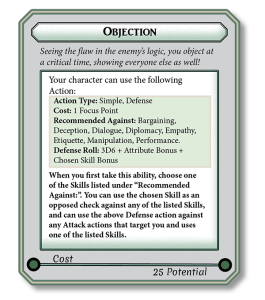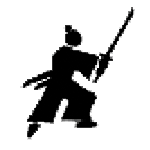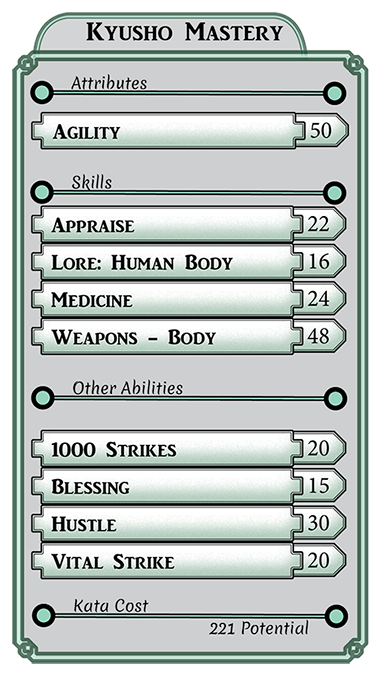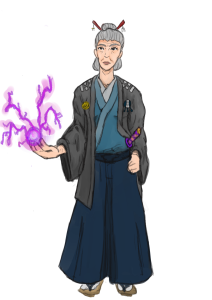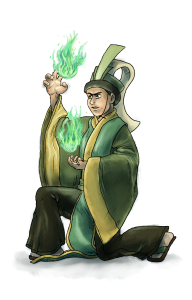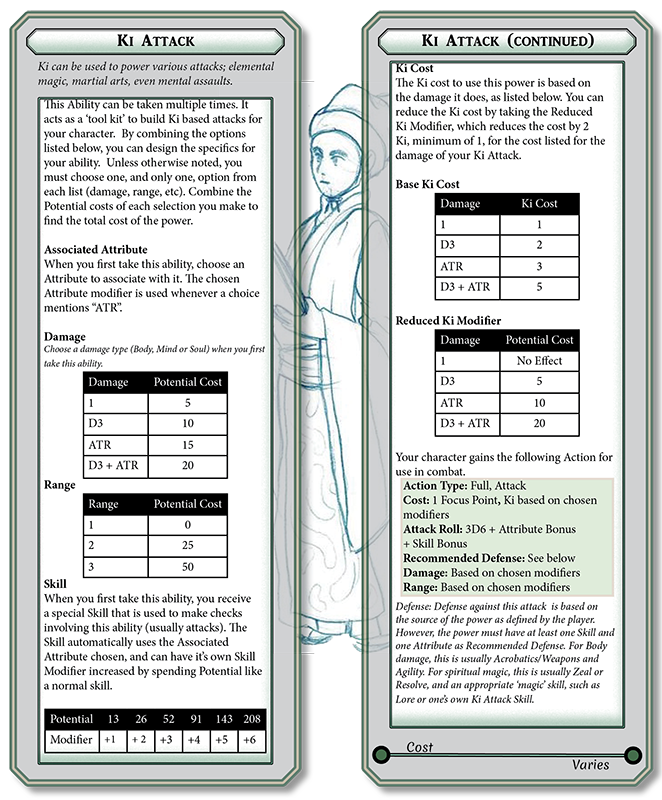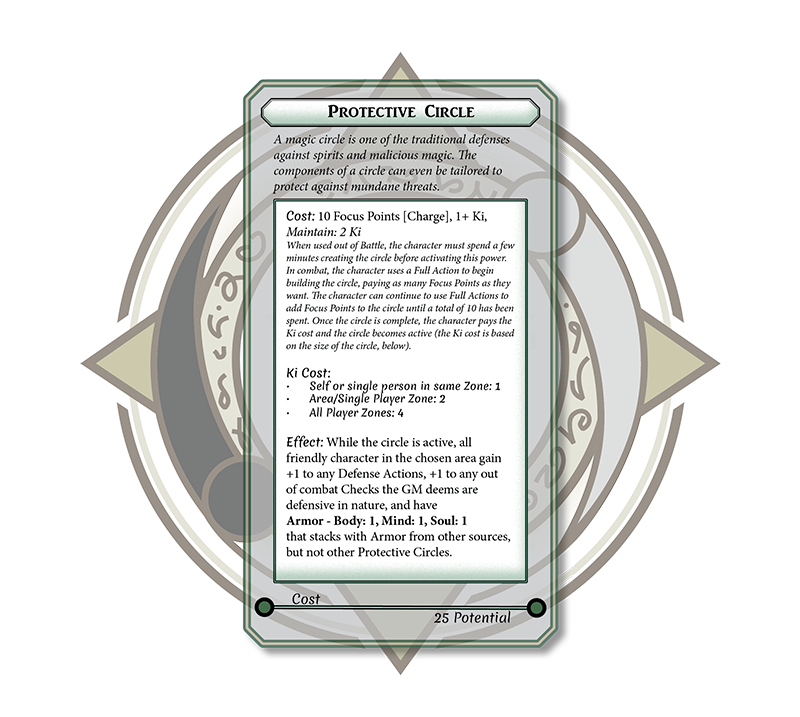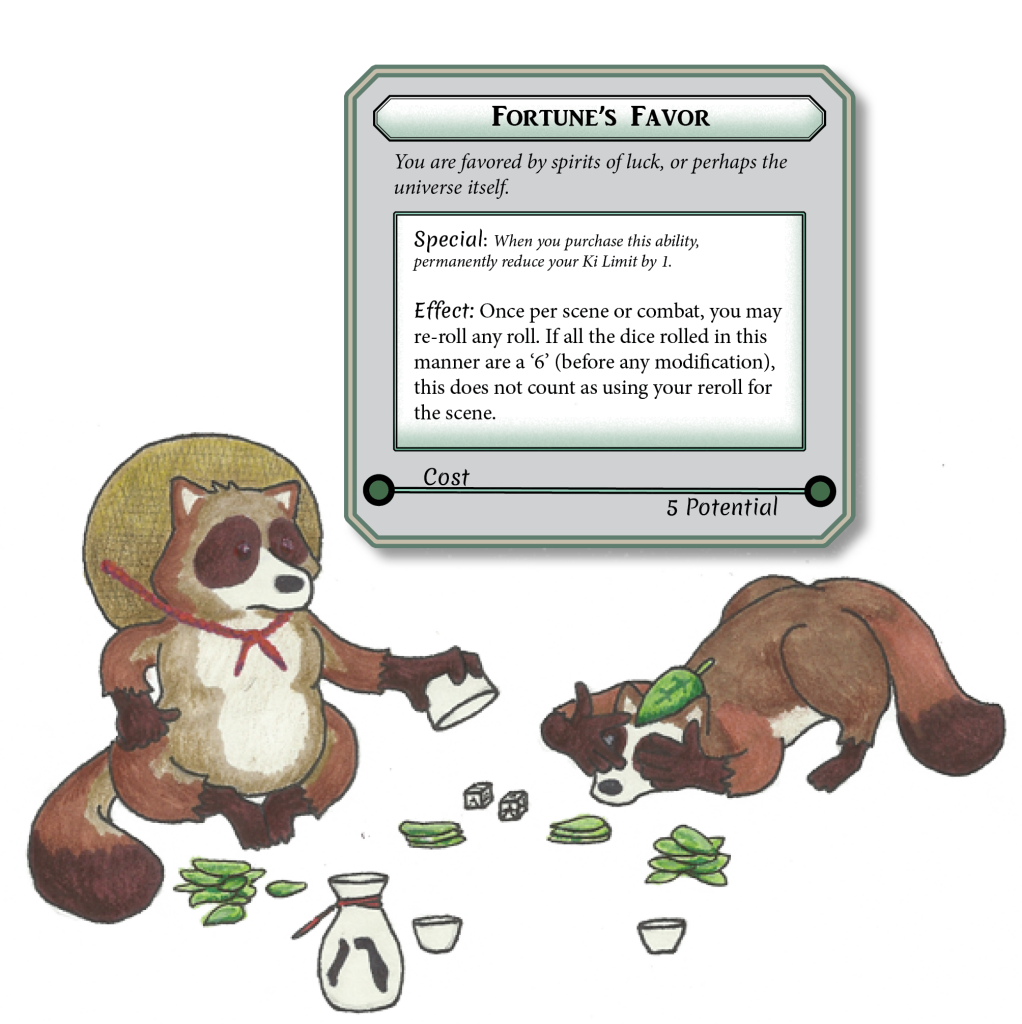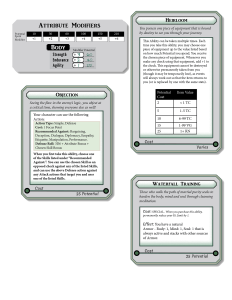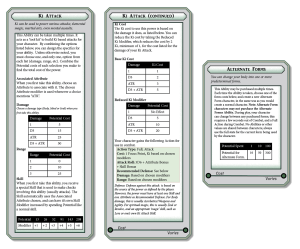The big game is tomorrow, and being here in the Seattle area, we’re extra excited. Unfortunately, that doesn’t mean we get the weekend off, so I thought ‘Why not write a post about playing football in Yokai?’
Our conflict rules are designed to work similarly for not only physical combat, but things like social debates and investigations. In the coming weeks we’ll have examples how you can use the same rules for playing out all kinds of conflicts without needing differently functioning systems. But tonight, I’ll show you how you can make up your own content for the rules in the book to play out any kind of contested event between groups.
Football In Yokai
Let’s start with the basics of both games. In Football, you’re trying to move the ball towards the endzone, and the opponent is trying to stop you. In Yokai, you make contested Checks (3D6 + relevant modifiers) to see how well you do against someone else. You also get a +1 modifier of ‘success’ for every 3 points your total is greater than the character you rolled against. Those are over-simplifications, of course, but when you’re designing mechanics, it helps to start with figuring out what exactly players are trying to do, and how they go about doing it.
So, at the very basic level, if a GM didn’t want to do too much, you could simply have the running back make a contested roll against the Offensive Line, say Agility or Strength versus Strength or Endurance. And for every MoS (Margin of Success, or 3 points, as described above), the RB gains 1 yard. Pretty simple, if a bit boring. For a pass play, you could have the Quarterback and Receiver make an Assisted Skill Roll (both characters roll, take the highest roll, and +1 if the other character succeeded), and again, give 1 yard gain for each MoS.
If you were just doing a quick pickup match in the middle of another story, this would be fine. Our combat rules are intended to help the story flow, and if no one at the table is too interested in bogging down play with more depth of ‘combat’ for a simulation of Football, these rules would at least let you move the ball around the field. Add a quick Morale value for each team, set the Tide bars to 10 each (each 10 yards on the field), and you’re all set to go.
But what if you wanted more complex rules? For example, what if you were playing an entire campaign based around Football? Sure, you probably aren’t likely to play American Football in Ancient Japan, but it’s a good example of how a Game Master can set up skills and associated abilities to focus their games on whatever they want.
Teams
First, let’s talk about teams, since one of the most important mechanics in Mysteries of the Yokai is how the player characters work together. We use the Morale and Tide bars to simulate how a group wins or loses together, even when a specific individual may not be ‘hurt’ by the opponents. If this isn’t a metaphor for Football as well, I’m a Dallas fan (that means it is an apt metaphor, for the non-NFL fans among you, dear readers). In Football, a star player may make the memorable plays, but no one player wins or loses a game; it’s a team effort.
Basics of Football Conflicts
Action starts in both games at the line; the line of scrimmage, and the line between both Close zones in combat. In a Yokai Football game, the offensive line is trying to protect the opponents from getting in to their friendly Medium and Far zones, where the quarterback, running backs, and receivers are going to be making skill checks from. Unless your playgroup really wants to have 22 characters to track in combat, you’ll probably want to have a single ‘character’ for each line.
In Football, the Offense has 4 Downs to move the ball 10 yards. In this case, we’ll simulate this by allowing the Offense 4 Downs to break the Tide bar, which will be set to a size of 10 on each side for these conflicts. If you’re looking for even more realism, you can implement rules for penalties and alter the Tide bar even more, but we’ll keep it more simple for example purposes.
Plays in Football are generally broken down into either Runs or Passes. So, the side playing Offense will need to decide before the round starts, what kind of play they will do. The Offense should write down or otherwise tell the GM in some way which kind of play they will be performing before the down starts. If you are doing a standard “players on one side, NPCs on the other”, there’s nothing to worry about, but if you’re doing something where there are players on both sides, you’ll want to keep it secret. Similarly, the Defense needs to tell the GM whether they intend to protect against run or pass. Again, if you’re looking for more realism and options in play, you could have all kinds of passes and runs, zone or man defenses, etc.
Taking Actions
For Football, you’ll need to have some slightly different Initiative rules. While Yokai does simulate an abstract combat round where people are constantly moving and attacking, it focuses more on one character acting, followed by another. In a Football simulation, everyones actions would be happening more simultaneously, at least at the start of each play. So, for these rules, the first two characters to act each new Round would be the Offensive Line and Defensive Line. Have the characters make an opposed check. This could be as simple as Strength vs Strength, but if you’re using expanded homemade skills, this would be something like a Line Skill test and better players would have skills to use. Keep note of whoever wins this Line test and by how much, since it will affect the rest of the Round.
Next, each character on the defense side will declare their actions. Here are two basic actions that should always be available, but a football focused campaign would likely want to have more than these.
- Blitz: This is an opposed Check between the Defense character and the Offensive Line character. This action does Tide damage if it succeeds (this simulates hurrying the quarterback or tacking the running back).
- Cover: Choose a receiver or running back. If that character makes a Run or Receive Check (see below), you get to make an Opposed Check to stop them.
Next, the Offense should declare. Again, the order only really matters when players are going against each other, otherwise the GM should just ask players what their side is doing. Offense players take their actions based on the position they play at.
- Quarterback: A QB will either pass the ball to a receiver, or hand it to a running back
- Receiver: A Receiver will first attempt to get open, then can attempt to catch the ball if the QB throws to them
- Running Back: An RB will make a Run action if they QB hands the ball to them.
Everything starts with the Quarterback, since they get the ball at the snap. From the start, the QB is going to modify their rolls by the MoS of the Line. If the Defense won the check, the QB takes a penalty to any checks they make equal to the MoS, but if the Offense won, the QB adds the MoS as a bonus.
Example: During the Line Check, the Defense rolls a total of 15, while the Offense rolls a total of 19. Since the Offense won by four points, the QB gets a +1 to any check for the rest of the Round.
The Blitz
Next, any Defense characters who are taking a Blitz action get to go. Have each of them make their Check vs the Offensive Line character. Successful checks inflict Tide damage, as noted above. If the total of this damage breaks the Tide Bar, they have sacked the quarterback or tackled the running back for a loss. Inflict the point of Morale damage, and then end the Round and advance the Down by 1.
Offense Actions
If the Defense doesn’t break the Morale bar as noted above, the Offense now takes their actions.
- Receiver: Each Receiver character will make a Check to get open. Any defender taking the Cover Action can choose to make an opposed check against one receiver of their choice. Otherwise the receiver is only opposed by a straight 3D6 rolled by the opponent’s side, just as if they were making an attack against a target that took no defensive action. If the receiver loses the opposed check, they are not open for a QB this Round, but can try again next round.
- Quarterback
- Pass: This action is declared before the Receivers make their rolls, but resolved after they finish. The QB waits until each Receiver has resolved their Check to get open, then chooses one open receiver. If there are no open receivers, the QB can either wait until next Round, or attempt to make a Run action as if they were a running back (see below).
- Hand Off: Choose one running back in the same zone as you. Make an Agility Check versus difficulty 8 (modified by the Line MoS, as described previously). If the check fails, the round ends (players and GMs looking for more realism may want to use more in depth rules for fumbles). If the check succeeds, the chosen RB can make a Run action.
- Running Back: Once a RB receives a hand off as described above, they can make a Run action. This is an opposed check using either the RB’s Strength or Agility, versus the Defensive Line’s Strength or Agility. The Defensive Line receives a -1 penalty to this roll for every defensive player that Blitzed.
Offensive Tide Damage
In the case where either the RB succeeded at their Run Action or a Receiver caught the ball from a QB performing a Pass Action, the offense inflicts Tide Damage equal to 2D6 + the MoS of the action. End the Round and advance the Down by 1. If the Offense breaks the Tide Bar, reset the Down to 1. If the Down goes over 4, the side playing defense gets the ball, and goes on Offense.
(Example: A QB throws to an open receiver. The receiver rolls a total of 18, and the defense rolls a total of 9. This is succeeds by 9, so the offense will add +3 to their tide damage. The Offense rolls 2D6 and gets ‘1’ and ‘3’, so the tide damage is 1+3+3 = 7 damage.)
Incomplete Passes
The above rules abstract incomplete passes out of the game to speed up gameplay. However, players looking for a more realistic ruleset can use the following rules.
A QB can throw to a receiver that failed their roll to get open. In this case, the receiver receives a penalty to catch the ball equal to the defensive characters’s Agility Modifier. If the receiver wins the check, they catch the ball and inflict Tide Damage as described above. If the defender wins the roll with a MoS equal to or greater than twice the receivers Agility Modifier, they have intercepted the ball, the round immediately ends, and the sides switch offense and defense. If the defender wins the check, but by less than enough to intercept, the pass is incomplete. Immediately end the round and advance the Down by 1. Astute readers may notice the play ends, and big defense fans may want to houserule in ‘pick 6’ rules.
Playing An Actual Football Game
So far, we’ve only talked about modeling actions of Football, not actually playing a full game. Afterall, what does it mean to score a touchdown when you’re already inflicting Morale damage? How do punting and kickoffs work? Unfortunately these rules are even longer than the above, and the point of this article isn’t actually to write a Football supplement, but to get you thinking about how you can adapt your own conflicts to rules you can use in Yokai. If people actually want to see more about Football in Yokai, feel free to leave comments and we’ll see about putting together a quick little supplement book. Otherwise, we hope this has got you thinking. Even if you’re not familiar with the rules of Football, a look at these rules can get you going in the right direction for other activities. The basics of performing actions in Yokai is always about Checks, and most conflicts are going to be about opposed checks between sides. Players wanting to model something unique should think about what the characters are trying to achieve, and build actions that perform checks to do those actions. Any action that helps your side overall should inflict Tide Damage to the enemy. Want to stat out a heist? You’re probably going to want rules not only for safe cracking and security hacking, but for the distraction high-stakes Poker game going on above the vault.

